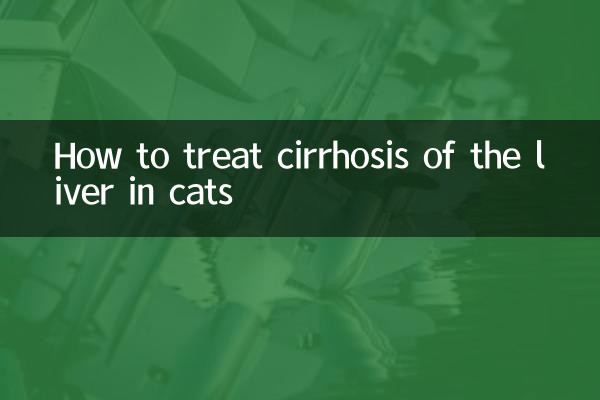How to treat cirrhosis of the liver in cats
Feline cirrhosis is a serious liver disease that can be life-threatening to your cat if not treated promptly. This article will combine the hot topics and hot content on the Internet in the past 10 days to introduce in detail the treatment methods, preventive measures and care points of feline cirrhosis to help cat owners scientifically deal with this problem.
1. Symptoms of Feline Cirrhosis

The early symptoms of feline cirrhosis may not be obvious, but as the disease progresses, the following symptoms will gradually appear:
| Symptoms | Description |
|---|---|
| Loss of appetite | The cat becomes less interested in food and even refuses to eat |
| weight loss | Significant weight loss in a short period of time |
| vomiting or diarrhea | Digestive system disorders |
| Jaundice | Yellowing of the skin, gums, or whites of the eyes |
| Ascites | Abdomen is swollen and fluctuating when pressed |
2. Treatment methods for feline cirrhosis
The treatment of feline cirrhosis requires a combination of methods. The following are common treatment options:
| Treatment | Specific measures |
|---|---|
| drug treatment | Use hepatoprotective drugs (such as S-adenosylmethionine), diuretics (such as furosemide), etc. |
| diet modification | Provide low-protein, easily digestible food that supplements vitamin B and K |
| Infusion therapy | Correct electrolyte imbalance and supplement nutrition |
| surgical treatment | For severe ascites or complications, veterinary evaluation is required |
3. Preventive measures for feline cirrhosis
Preventing feline cirrhosis is more important than treating it. Here are a few things cat owners need to pay attention to:
| Precautions | Description |
|---|---|
| Regular physical examination | Take your cat for a comprehensive physical examination at least once a year |
| avoid toxic substances | Prevent cats from coming into contact with pesticides, cleaning agents, etc. |
| healthy eating | Choose high-quality cat food and avoid high-fat foods |
| control weight | Obesity increases burden on liver |
4. Key points of care for cats with liver cirrhosis
For cats who have been diagnosed with cirrhosis, daily care is particularly important:
| Nursing points | specific suggestions |
|---|---|
| Quiet environment | Reduce stress and anxiety in cats |
| Eat small meals more often | Feed 4-6 times a day to reduce the burden on the liver |
| Watch for symptoms | Record your cat’s diet, excretion and mental state |
| Regular review | Liver function tests as recommended by your veterinarian |
5. The connection between hot topics on the Internet and feline cirrhosis
In the past 10 days, among the hot topics about pet health, the following content is related to feline cirrhosis:
| hot topics | Related content |
|---|---|
| pet health products | Search volume for liver protection health products increased by 35% |
| pet insurance | Liver disease treatment costs high, insurance inquiries increase |
| homemade cat food | The share of low-fat recipes has increased significantly |
6. Summary
Feline cirrhosis is a disease that requires long-term management, and early detection and treatment are key. With appropriate medication, dietary adjustments, and careful care, many cats can maintain a good quality of life. Cat owners should pay close attention to their cats' health, conduct regular physical examinations, and avoid factors that may cause liver damage.
If you find that your cat has symptoms suspected of cirrhosis, be sure to seek medical treatment promptly and do not self-medicate. The veterinarian will develop a personalized treatment plan based on the specific situation to help the cat regain health.

check the details

check the details